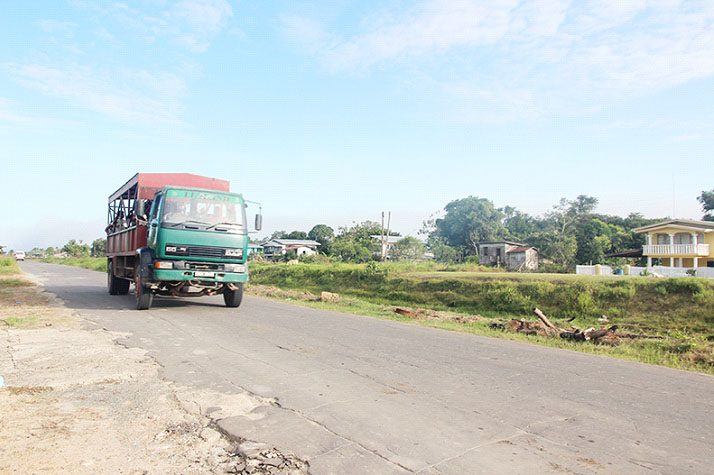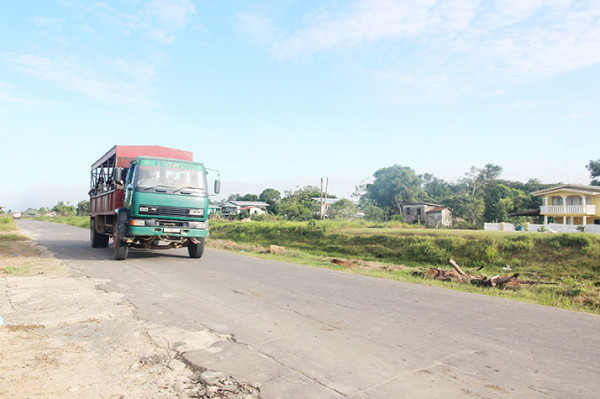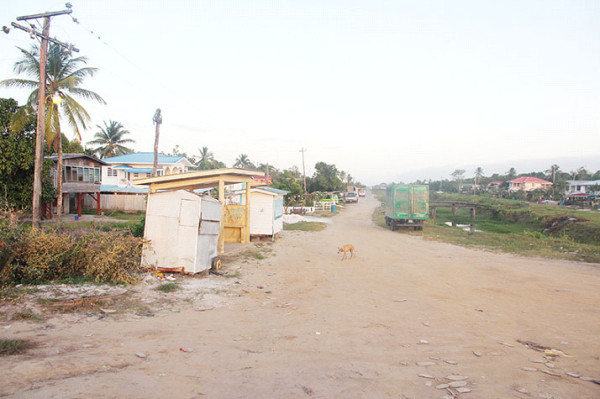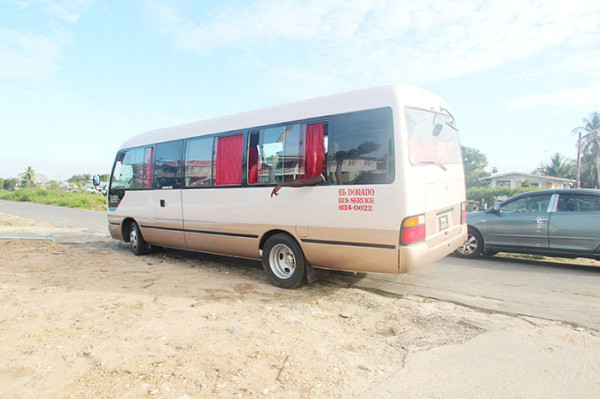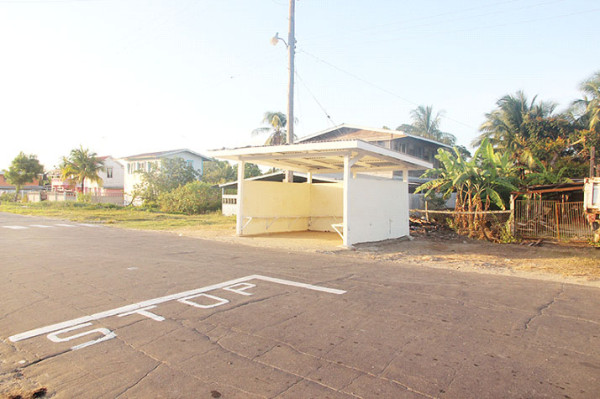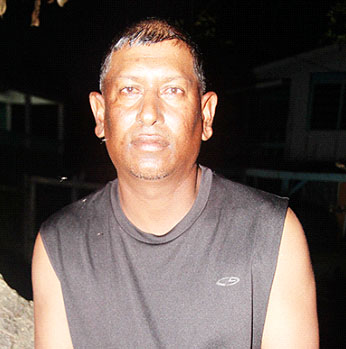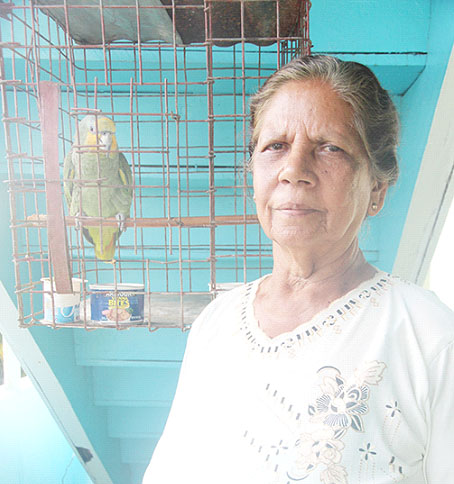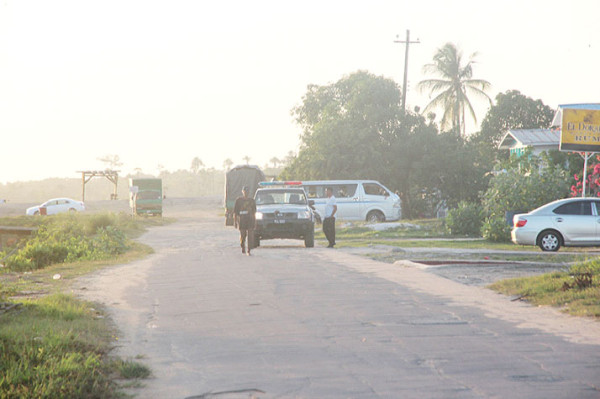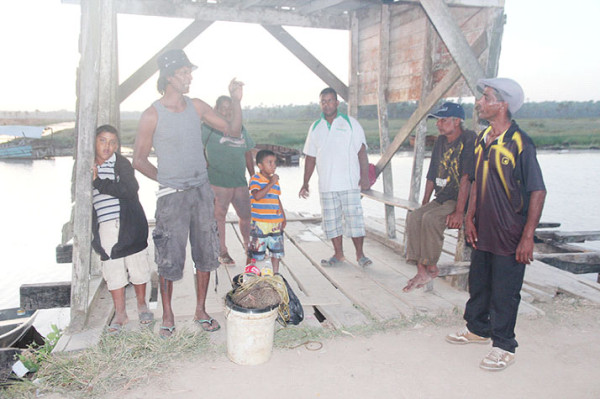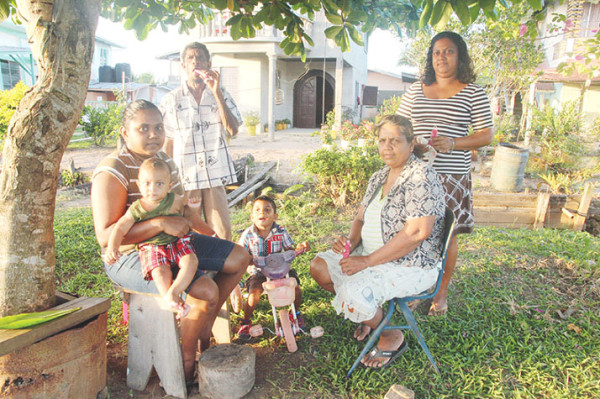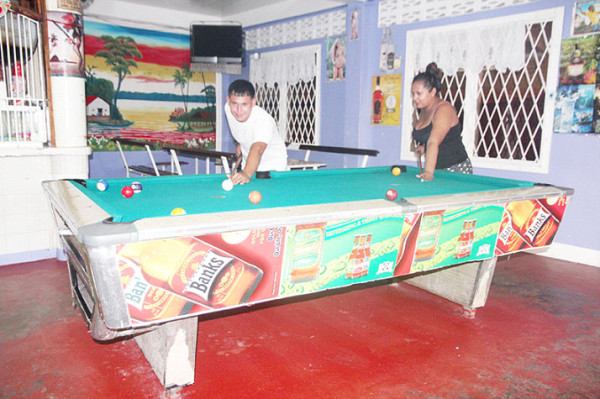Story and photos by Joanna Dhanraj
One of the cars parked at Stanleytown junction, once full, takes off to its destination. It really did take off; the wind slapped me in the face as the car sped at 100 kph. It was a smooth ride for three quarters of the way when we hit the pot holes and really rough parts of the road. Soon I saw the sign for North Section, Canal Number Two Polder.
The houses that line one side of the public road run until they reach the calm black waters of the Canal Number Two conservancy. The population is approximately 1,000. North Section once housed two coffee mills where the farmers who planted coffee took it once dried, to be ground. One of the mills no longer exists today but the owners of the other use it to grind masala and geerah. The owner of that mill was not available.
The mile-long farms stretched out behind the houses and reach as far as Canal Number One Polder. They are overflowing with sugar cane, mangoes, cherries and oranges to mention a few crops.
In one of those fruit-filled yards that has no fence but bright, colourful flowers to border it, Heeria Ramklelawan sat on a bench chatting with her son who was rocking in a hammock.
When 17-year-old Heeria married Jairaj Ramklelawan in 1957, she left her home in La Grange to live at his. She recalled being driven in a car along a red road with bushes on both sides. When she arrived, she met not just her in-laws, who anticipated her arrival, but also a farm bursting with coffee to be harvested. The farm, she said, was planted by her father-in-law and husband but as time went by she became familiar with the ways of the backdam.
“I used to go into the farm to pick coffee two or three times a week. After picking it, we dry it in the yard and when it dry, we carry it to the mill to grind,” Ramklelawan said. When sugar cane was introduced in the 80s, they took to planting cane. Today she and her children plant cherries, cashews, breadfruits, tangerines, mangoes and pears. She helps when it’s time to harvest them then they sell wholesale to other vendors in Canal Number Two.
Ramklelawan said when she moved to North Section, she met Indo and Afro Guyanese neighbours. The villagers, she said, lived like family; neighbours borrowed sugar and rice when necessary, unlike now where the residents remain reserved.
“The yards didn’t had fence and dem children use to play and run from yard to yard,” she said. Those same yards were a “saviour” to them when the road was bad and she and others would walk through them until they got to their houses, she said. “North Section isn’t a place for everybody to live; only for people who like the quietness. It is quiet and peaceful. In the nights and early in the morning the place is cold, especially in the dry season.”
The road, she said, needs to be fixed so that the drivers wouldn’t have a problem to come to the end of the road. Ramklelawan also wishes for telephones. According to her, they once had dish phones where two or three houses shared a dish but that didn’t work out well. A few years ago after having gone in to GTT they were told they would get phones although the company wasn’t sure when.
Now a widow, Ramklelawan has seven children, one of whom lives with her while the others come and go. They’re often in the farm planting and while they upkeep the farm she brightens the yard with pretty flowers. As we spoke Krisho, her pet parrot, listened keenly. The parrot, she said, was taken home by one of her sons 40 years ago, tiny and featherless. Ramklelawan smiled saying Krisho might outlive her late husband who only lived until he was 43.
Sometimes she visits relatives and friends and many times they’d ask her to overnight but she much prefers to sleep at home. According to Ramklelawan, she’s become a “Canal gyal”.
Dhanpaul Singh was enjoying an oasis of the quiet and windy atmosphere in the comfort of his hammock when the World Beyond Georgetown dropped by. He had a few concerns to share and hopes that by highlighting them measures can be put into place that will make lives better for the people of North Section and other villages in Canal Number Two.
The road was the first one. “The road; some of the taxis working here don’t want to come here. If they come down you have to pay $500,” Singh said. What is supposed to be a $100 fare, more than triples once dark steps in. The man also said that road was surveyed and there were talks of fixing it but to date nothing has been done.
The suicide rate has him wishing that a counsellor can be assigned to Canal Number Two to deal with youths and other persons suffering from depression.
And according to the 75-year-old, the $17,000 pension he receives doesn’t even cover a two-week period. “The subsidy that we used to get for light and water; we don’t get it anymore,” he said.
Schoolchildren, Singh said, need a bus to transport them to and from school. Having a bus would remove the trouble of finding “passage money”; an expense that is a great burden to parents whose budgets are often squandered by that means.
Finally, he pointed to there not being any measures in place to deal with emergencies should any arise. “The health centre has a room situated above for a medic to live in but the medic comes and goes. The medic works from 8.30 in the mornings onto 3 in the afternoons or somewhere around that. At night, persons usually have to travel as far as the Best [West Demerara Regional] Hospital in case of emergencies,” he said.
Singh, who has been living in North Section for a number of years has stayed on in spite of the disadvantages, not only because of the tranquil atmosphere he enjoys but mostly because of the people of North Section. “It’s quiet. It’s a nice place. There are lots of fruits. The people are nice. We live neighbourly. You can get something without paying for it. There are lots of organic fruits and vegetables,” he said.
Sometimes when he feels cooped up he visits the community centre in South Section—the village opposite—where the youths play cricket.
At the end lives Dindial Narine known as Vijay, who was sitting on a bench, enjoying the sunset. The 48-year-old was born in North Section and lives with his family. He works at the New Line Aqua Farm, situated in South Section.
He lives near the conservancy and according to him rumour has it that the sweeter the black water, the richer (more fertile) the land. This, he said, is borne out by the abundant produce farmers receive. “Years back we used to drink that same water,” said Vijay. Having asked if he had ever swum in the conservancy, he smiled then replied, “When you grow up by the conservancy, you got to know to swim.”
He recalled his boyhood days, attending the Kawall Primary School then returning home in the afternoons to go with friends to graze cows in the backdam. He said he grew up hearing his grandparents talk of taking the launch (boat). The launch took them through the Canal that runs down the middle of Canal Number Two all the way out to the Stanleytown junction. Vijay said they road was only built after he was born.
As we spoke persons who were awaiting transportation had to call a taxi after waiting for almost thirty minutes without getting anything. The road is one of the biggest issues here; one that Vijay hopes can be fixed really soon so that the residents of North Section can have easier access to transportation. He also made mention of the trench being cleaned every month but it’s been a while since anything has been done to upkeep it.
For him North Section is a haven and a peaceful environment. “It’s a quiet place. Everybody okay. It’s quiet and nice. We don’t get no rowing. You can go to work, come home, ketch two fish at the conservancy and relax.”
